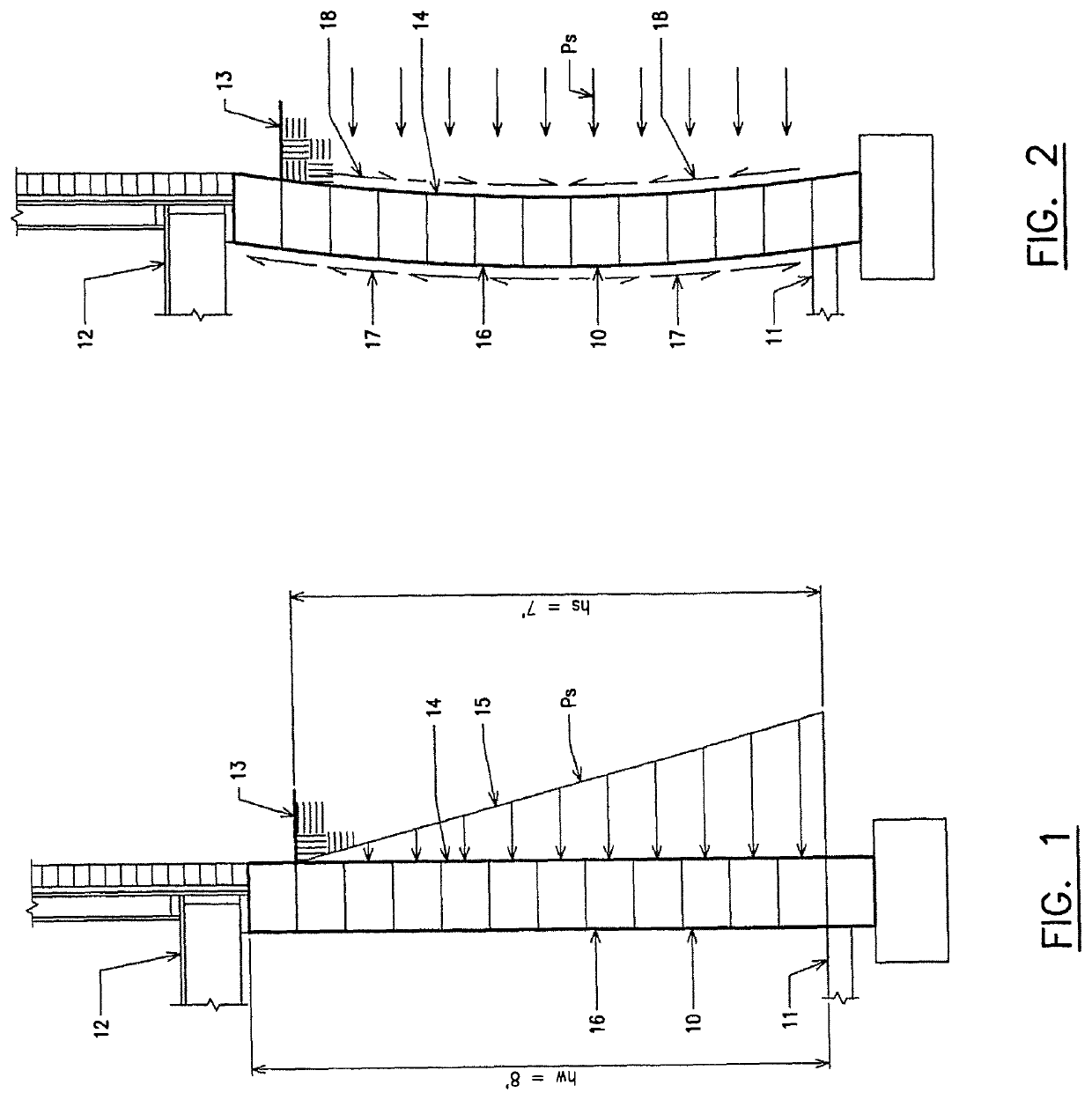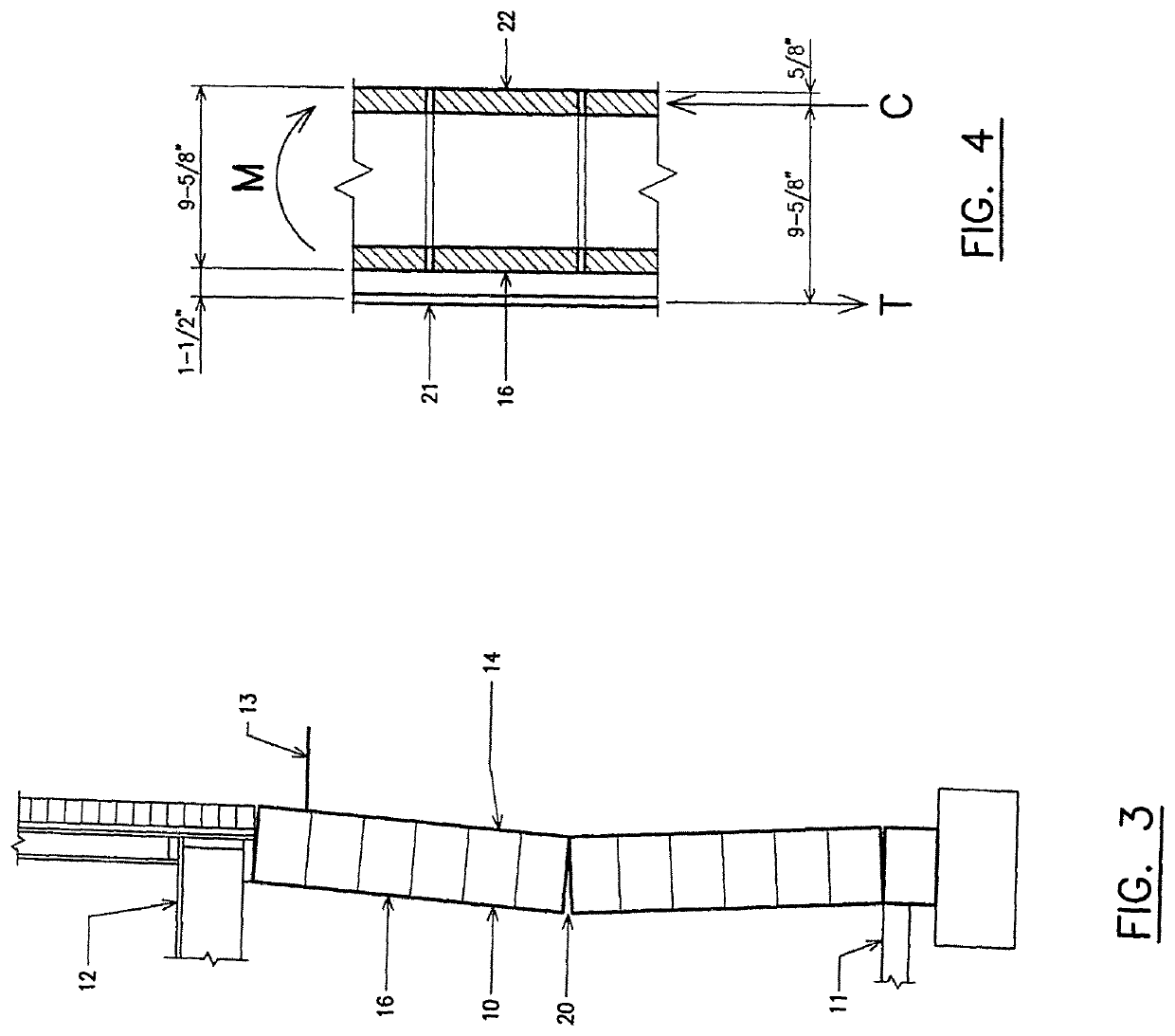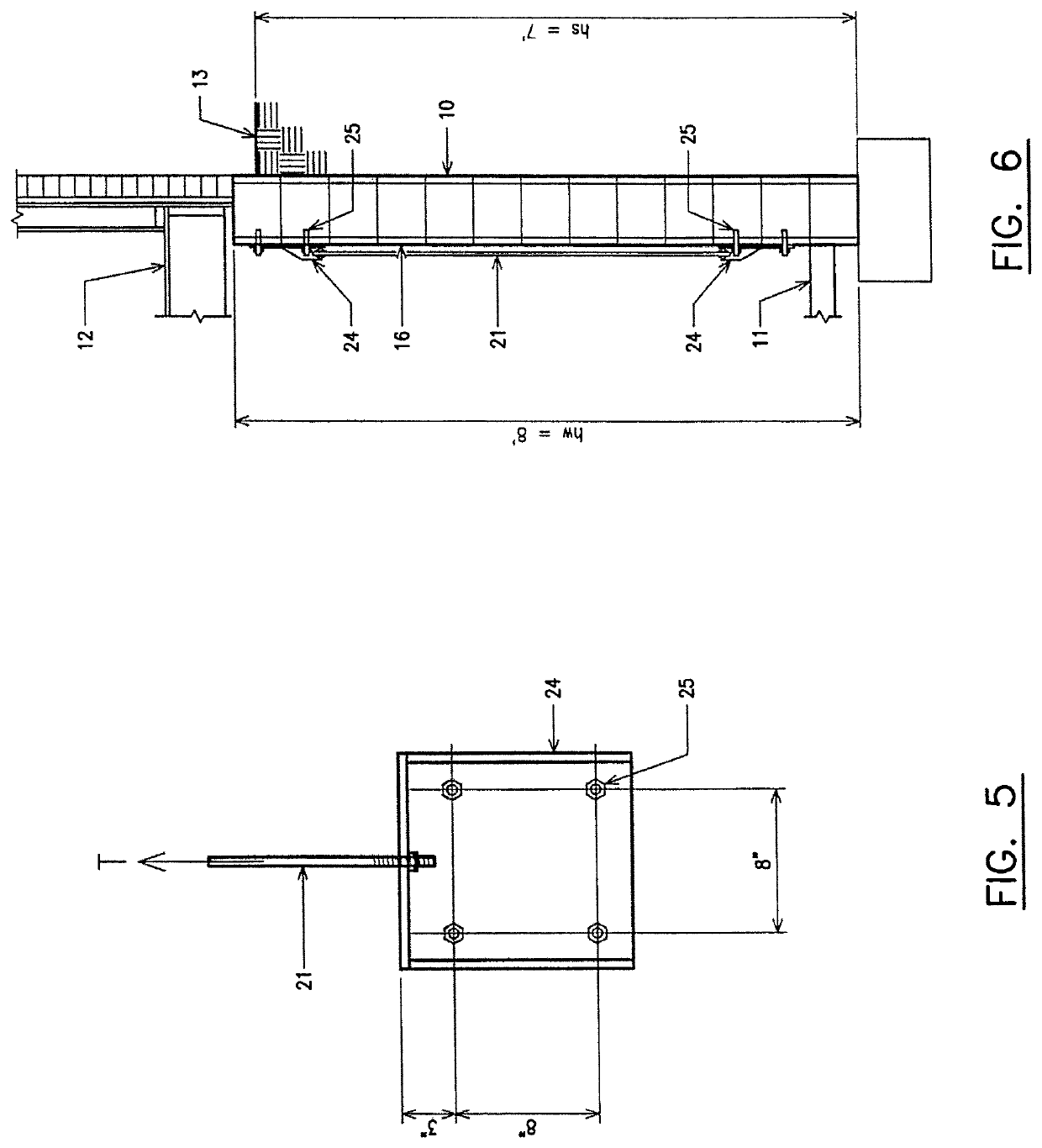Method and apparatus for repairing retaining walls
a technology for retaining walls and retaining rods, applied in the direction of building repairs, construction, building structures, etc., can solve the problems of system not providing any method of determining the necessary tension rod size and spacing, system simply not providing any information regarding, and no specific design parameters included. , to achieve the effect of greater load capacity
- Summary
- Abstract
- Description
- Claims
- Application Information
AI Technical Summary
Benefits of technology
Problems solved by technology
Method used
Image
Examples
Embodiment Construction
[0031]The system of the present invention is an improved method of repairing masonry and concrete retaining walls that are failing under lateral earth pressure. The system consists of a series of threaded steel tension rods anchored to the inner surface of a below grade (basement) retaining wall that is cracking and bowing inward as a result of lateral earth pressure applying horizontal force against the outer surface of that wall. It works by applying external tension forces to the inner wall surface to counteract calculated internal tension forces that have developed in the masonry or concrete as a result of bending from the lateral earth pressure, to stabilize the wall and correct the problem. Through proper design and installation, this system can even be used to re-straighten bowed walls back into their original “un-bowed” condition. While other wall repair systems claim to have the ability to straighten bowed walls, only the system of the present invention can truly perform th...
PUM
 Login to View More
Login to View More Abstract
Description
Claims
Application Information
 Login to View More
Login to View More - R&D
- Intellectual Property
- Life Sciences
- Materials
- Tech Scout
- Unparalleled Data Quality
- Higher Quality Content
- 60% Fewer Hallucinations
Browse by: Latest US Patents, China's latest patents, Technical Efficacy Thesaurus, Application Domain, Technology Topic, Popular Technical Reports.
© 2025 PatSnap. All rights reserved.Legal|Privacy policy|Modern Slavery Act Transparency Statement|Sitemap|About US| Contact US: help@patsnap.com



